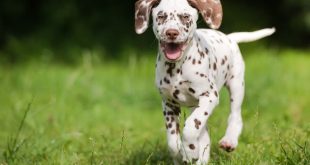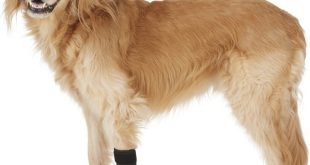In this article we will be discussing a condition called Hygroma which can affect dogs. I’m a proud parent of a 3-year-old handsome English Mastiff named Max. Now Max is a highly active canine who loves to play and run around the yard.
But there is one thing I also realized, his favorite spot to lay during the day is right by a cool corner in my corridor. One day, I noticed that Max, had suddenly developed a swelling on his elbow that started out quite small. I touched it and he did not show signs of any pain or discomfort.
Took Him to the Vet
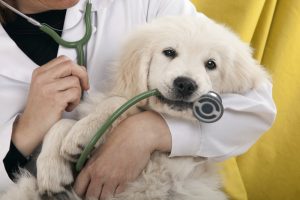
Max was active as usual but then, this swelling continued to grow. So, I contacted my veterinarian and scheduled an appointment. My vet’s concluded that Max had something called an hygroma on his elbow.
I learned that this swelling could appear on the elbow, hip, ankle, or on any other bony part of a dog’s body. I also told my vet that this swelling grew pretty big and felt like it was filled with fluid, but it didn’t seem to hurt Max.
Which was concerning, right?
My feeling of concern was normal because when something doesn’t look right with my handsome canine friend, I simply want to get to the root of it as soon as possible.
Don’t Panic

Nobody wants to take chances when it comes to your dog’s health! You see if you’ve just noticed a swelling on the bony prominences of your dog’s body, so long as this swelling is not impairing your pup’s movement or causing pain, don’t panic just yet.
Just like Max, your pooch may have something called an “hygroma”. I do suggest though that you let your vet confirm this diagnosis before attempting to do anything about it.
If you already know what hygroma is, then perfect! But if you don’t continue reading to find out.
Table of Contents
- What is Hygroma?
- Types of Hygromas in dogs.
- What are the symptoms of Hygroma?
- What causes Hygroma?
- Common areas for Hygroma formation in dogs.
- Diagnosing Hygroma in dogs
- Is Hygroma a tumor?
- How to prevent Hygroma in your dog.
- How to get rid of your dog’s Hygroma?
- What happens when you refuse to treat your dog’s Hygroma?
- Your pup’s recovery from Hygroma.
- Conclusion
What is Hygroma in Dogs
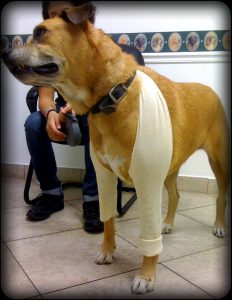
A Hygroma in dogs presents as a fluid-filled swelling surrounded by a thick capsule of fibrous tissue that develops under the skin. This swelling is usually not painful and can form over any bony prominence on your doggie’s body.
When a Hygroma first forms, it appears small and soft. Although it may never grow large enough to be noticeable. If it grows larger, it can become quite unsightly and feel hard to the touch.
Hygromas are more commonly seen in short-haired, large breed dogs such as Labrador retrievers, German shepherds, mastiffs, and Great Danes.
Types of Hygromas in Dogs
The truth Is, there aren’t different types of hygromas in dogs, but it is important to note that hygromas can be complicated if it’s compounded with comedones and furunculosis.
Also, follicular cysts or calcinosis cutis circumscripta may develop at the sites of the hygromas in some dogs. So, this means it’s important to get your dogs examined by your veterinarian and treat them accordingly.
What are the Symptoms of Hygroma in Dogs?
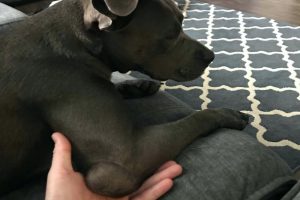
If your dog has an hygroma, you will notice a soft subcutaneous swelling filled with fluid. This swelling often appears yellow to red over pressure points or bony prominence.
Hygromas vary in size and can grow to about two inches in diameter but your dog will likely not show any signs of illness or discomfort. This means your pup probably not show any signs of pain when it is touched unless there’s a further complication (e.g. An infection). Also, hygromas are usually bilateral.
Causes of Hygromas in Dogs
An hygroma is often a result of your pup lying down on hard surfaces such as hardwood floors, tile, or concrete this causes minor trauma to the thin skin over a bony prominence. This is sometimes followed by an inflammatory response in the tissue under the skin over the elbow joint. It is a result of the body trying to protect the area by encapsulating it in a dense wall filled with fluid to cushion the joint. This is what becomes visible as the soft fluid-filled swelling that we call Hygromas.
Over time, with repeated trauma, this fluid-filled capsule will keep growing bigger. Normally, an hygroma, regardless of size, is painless but if allowed to become too large, it can get to the point of ulceration and abscessing. It is at this point that your dog may start experiencing pain and discomfort.
Usually, an hygroma is more likely to occur in larger breeds of dogs. This is because in large dogs there is usually more weight concentrated on the bony areas of their bodies. It can also affect dogs that are less active, especially after recovering from surgery, or in the dog’s elderly years.
Common areas for Hygroma formation in Dogs
An hygroma will typically be found over your pup’s pressure points, particularly of the leg joints including the ‘sit bones’ of the hip or hock joint. However, they are most often seen over the elbow region.
Diagnosing Hygroma in Dogs
The first thing your veterinarian will do is to carry out a physical examination of your dog.
This is after you contact your vet immediately after you first notice the swelling. Also, your vet will probably ask you a series questions to get an idea of when you first noticed the swelling on your dog.
It is therefore important to pay keen attention to your dog and note any unusual behavior. If you have noticed any changes in your dog’s behavior (for example, if your dog cries in pain or shows signs of an illness) then getting your dog examined should be the first step.
After this step, your vet may choose to conduct a biopsy to confirm the diagnosis, especially if swelling looks quite unusual. When doing a physical examination on the hygroma, it can be observed that it is separated from the skin. It will present as a tough, dense wall that is filled with fluid that can be somewhere between yellow and red in color.
The color is dependent upon the degree of trauma associated with the hygroma, leading to a larger or smaller number of red cells.
The lining of the hygroma sac will also appear pale and it can be smooth or rough.
Are Hygromas Tumors?
No, hygromas are not tumors. Additionally, as was stated earlier, they occur in response to repeated trauma to the tissue over a bony prominence which is often painless unless there’s a secondary infection at the affected area.
How to Prevent Hygroma in your Dog
When trying to prevent the formation of hygroma on your pup’s body, there are several things to consider.
The most important thing to do is, make sure your large/giant breed pooch is not allowed to become overweight or obese.
This is because the extra weight greatly increases the risk for trauma to your canine’s tissue, especially over bony areas.
The second step is to provide bedding with proper padding even if this means covering hard floor surfaces in areas where your dog likes to relax/sleep.
Once a dog has developed a hygroma, attention to a few details can prevent this condition from becoming a problem.
How to Get Rid of your Dog’s Hygroma
Thankfully, hygromas are 100% treatable. The course of treatment however depends on the size and severity of the hygroma and whether there are additional concerns like ulcerations or infections.
Home-made Solutions
The first step to consider when treating your dog’s hygroma is to prevent further trauma by providing suitable bedding with adequate padding. This extra padding should be provided in areas where your dog enjoys relaxing. The floor can also be covered with interlocking foam tiles like the ones found in fitness clubs and daycares.
The goods thing is these padded surfaces alone may be all that is required for stabilizing your dog’s hygroma. Also, cold-laser therapy can be extremely helpful when it comes to reduce inflammation on your pooch.
Products on the Market for Hygromas in Dogs
Another thing you should consider, is purchasing commercially available elbow pads designed specifically to protect hygromas to prevent them from growing or becoming infected and painful.
These elbow pads come in various sizes to suit your dog and also have room for adjustment for a perfect fit. This should not be a problem to use since most dogs easily tolerate using protective elbow pads.
You can also ask your vet if your dog would benefit from a brace, then get suitable recommendations. There are braces and elbow pads, some of which are custom-made to help prevent the progression and abscessation of hygromas.
Options for Chronic Hygroma
Should your dog suffer from chronic hygroma, surgical drainage, flushing, and Penrose drain may be recommended.
Three weeks after the surgical drainage the drained lesions should be dry, and the bandages can be removed at six weeks.
If lesions develop, small lesions can be treated with laser therapy. However, should severe ulcerations occur on your dog, your pooch may need extensive drainage, surgical removal, or skin grafts.
If your dog’s hygroma grows to a problematic size or becomes infected, you will need to treat your pooch with appropriate antibiotic therapy as recommended by your vet. In cases of surgery, please understand that this surgery will not address the main cause of the hygroma. Therefore, after the surgery, you need to pay attention and protect the affected area to promote healing and prevent infections and opening up of the incisions.
All In all, your vet will tell you all you need to know. He will also help you to decide how best to proceed with treatment for your dog’s hygroma.
Note this; there is a chance that your dog’s condition will not respond to treatment. If this happens, your veterinarian will likely recommend a skin biopsy to determine the best way to proceed with treatment.
What Happens when you Refuse to treat your Dog’s Hygroma?
I do not expect you to ignore a growth that is visibly present on their beloved pet. But just in case anyone feels it’s okay to ignore it, take this advice.
DON’T YOU DARE TO DO THIS TO YOUR CANINE FRIEND!
You see, ignoring a hygroma can lead to further complications especially when it grows too big and begins to have friction with the surface your dog lays on.
Situations like this can lead to bad ulcerations and bacterial infections which is not a good thing.
Now, instead of treating a more cumbersome ulcer or infection, it is best to tackle the hygroma immediately after you notice it.
This will also prevent your pup from experiencing unnecessary pain and immobility. It will also be saving you the extra cash you might spend on antibiotics and repeated trips to your veterinarian. Also, please note that, if small and uncomplicated by secondary infections, hygromas can be easily treated. This means catching a hygroma early before it becomes complicated which will require more invasive treatments.
Choose wisely and do the right thing!
Your Dog’s Recovery from Hygroma
You and your vet will surely discuss the need for follow-up appointments, which will depend upon your dog’s condition. Additionally, you will also be advised to provide a padded environment for your dog. This is recommended in order to avoid repeated trauma, complications with the wound, or recurrence of the hygroma. You must take this seriously!
Also, if your dog had lesions surgically reconstructed, your pooch would need to be confined with the affected limb supported in a sling. This is recommended in order to allow for the skin graft to take. After, the limb should be bandaged for about three weeks.
Considering that infection is common after aspiration, drainage, and reconstruction, you will be required to work closely with your veterinarian to ensure your dog is healing well. You will also be required to ensure that any infections that have developed are treated promptly.
This includes giving updates on your pet’s recovery and alerting your vet if you notice anything about your pet.
Conclusion
As a dog lover, discovering a growth or swelling on your pet can be alarming. However, if your pooch isn’t in pain, some patience may required. That is until you finally figure out the cause from your vet.
This does not mean you should not speak to your vet immediately you notice something right. It simply means that there is no need to be too worried to the extent that you begin suspecting a tumor. This is especially true if your pet is still as active and is not expressing discomfort when you touch the affected spot.
There is a possibility that it’s just hygroma which can be easily reversed without any complications – especially when you show this to your vet early enough.
Finally, it is an amazing thing to care for our best friends because we always want them active, healthy and happy. It is therefore important to check for hygroma formation from time to time especially if your pooch loves to sleep on a hard surface just like my boy, Max. If this isn’t the case, simply make the necessary adjustments around your canine’s favorite spot. and problem solved!
Wishing you the best with your doggie doo.
?
.
 Total Pooch Dog Supplements, Tear Stain Removers, De-wormers, Tylosin for Dogs and other great products.
Total Pooch Dog Supplements, Tear Stain Removers, De-wormers, Tylosin for Dogs and other great products.

